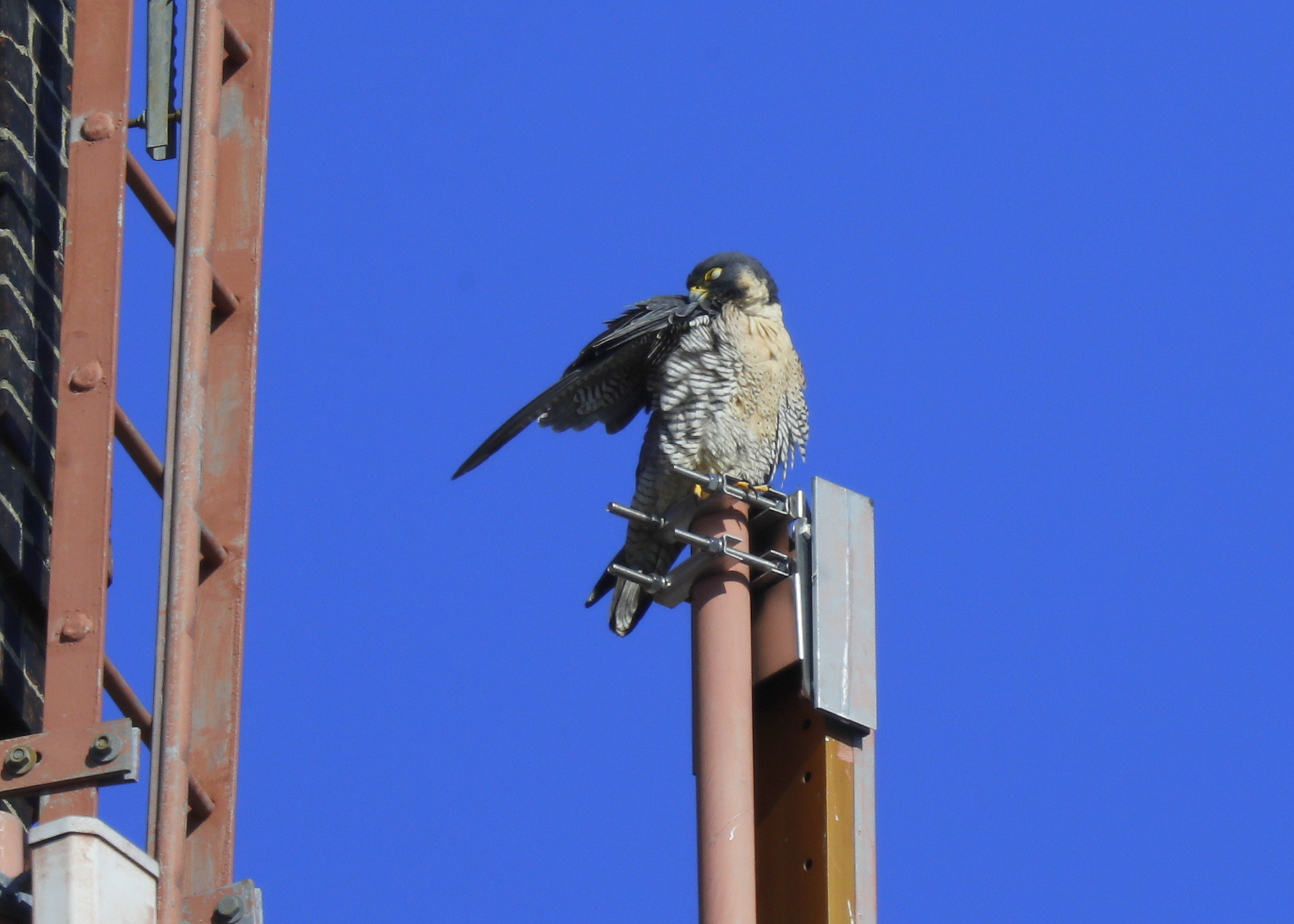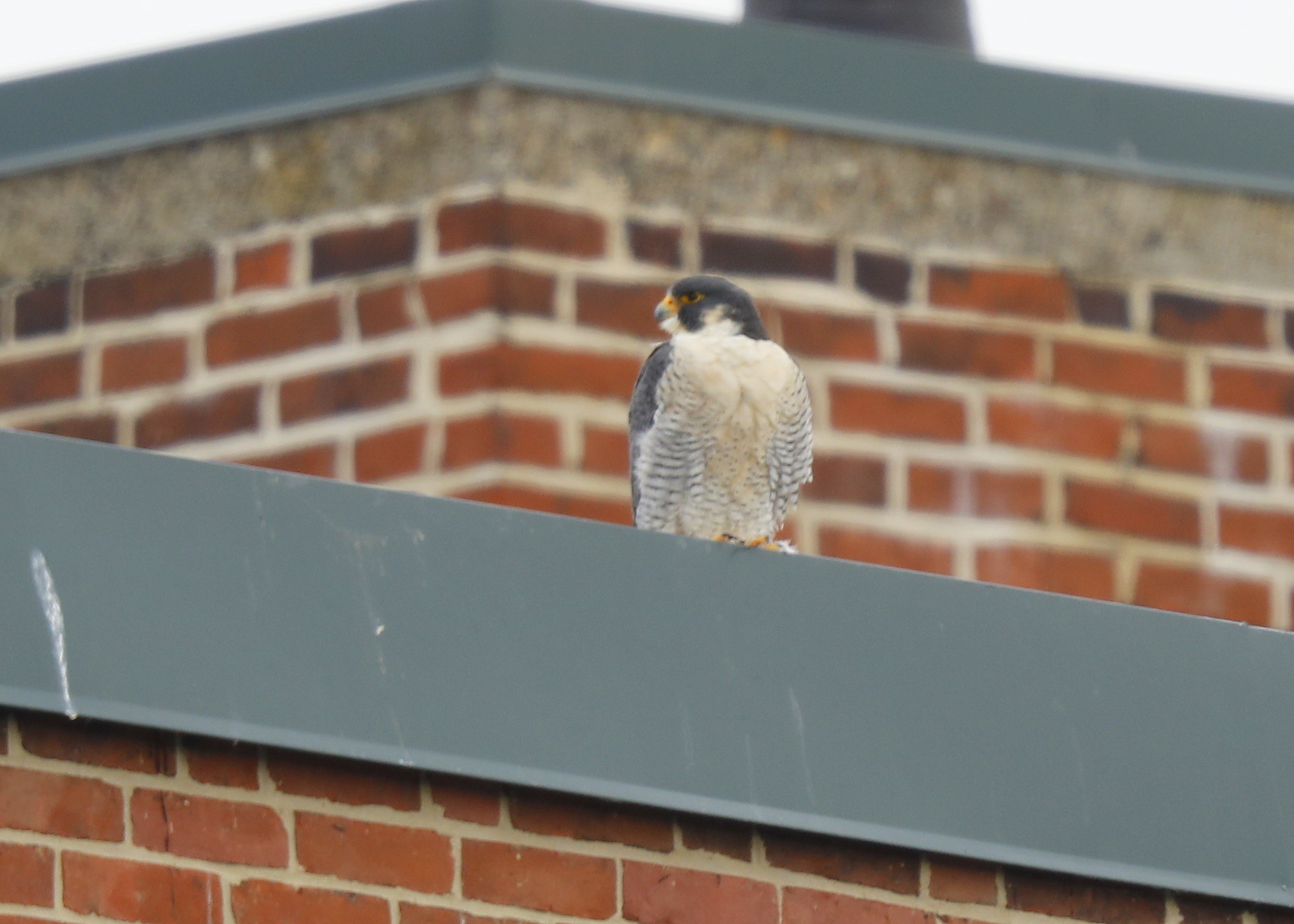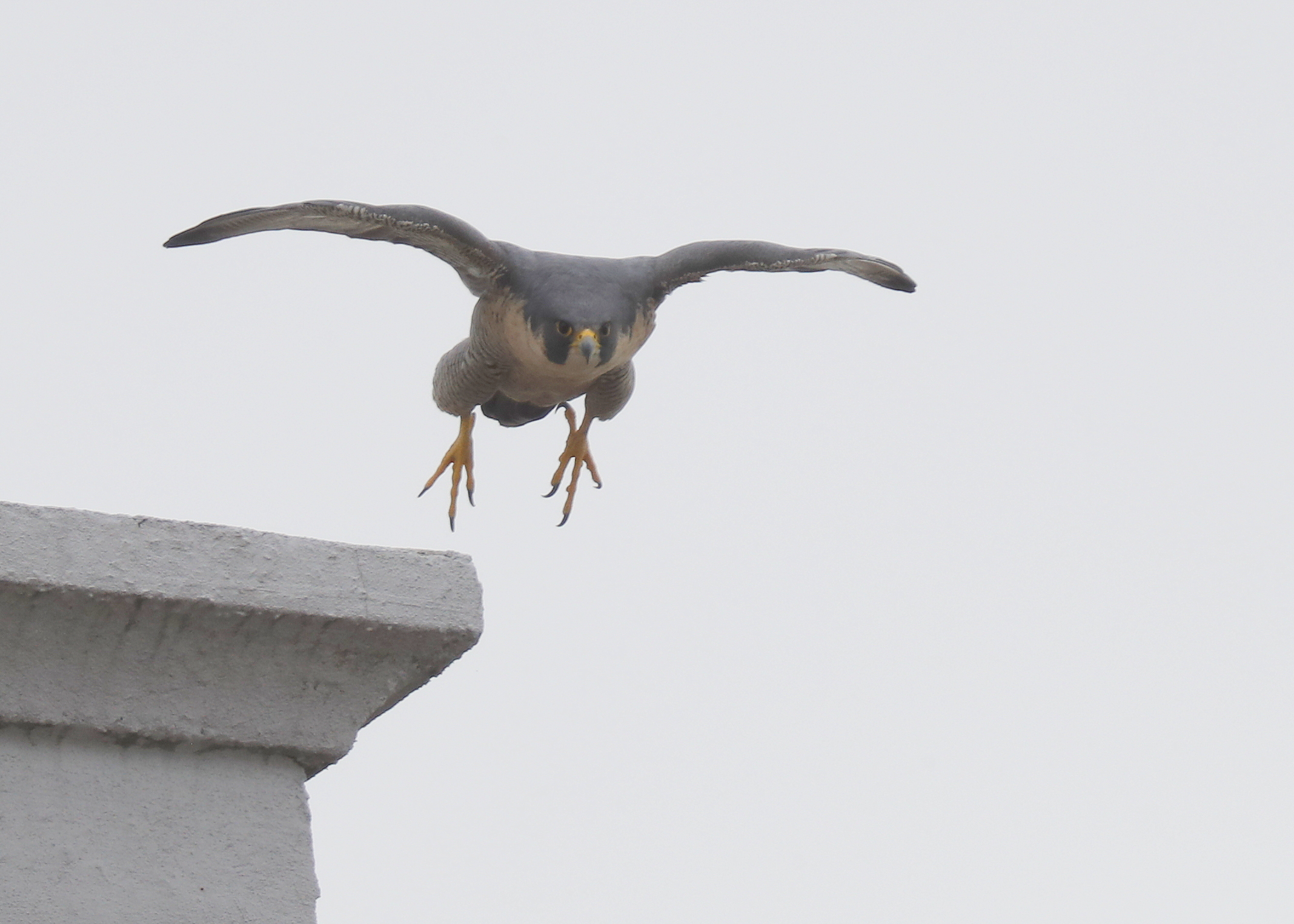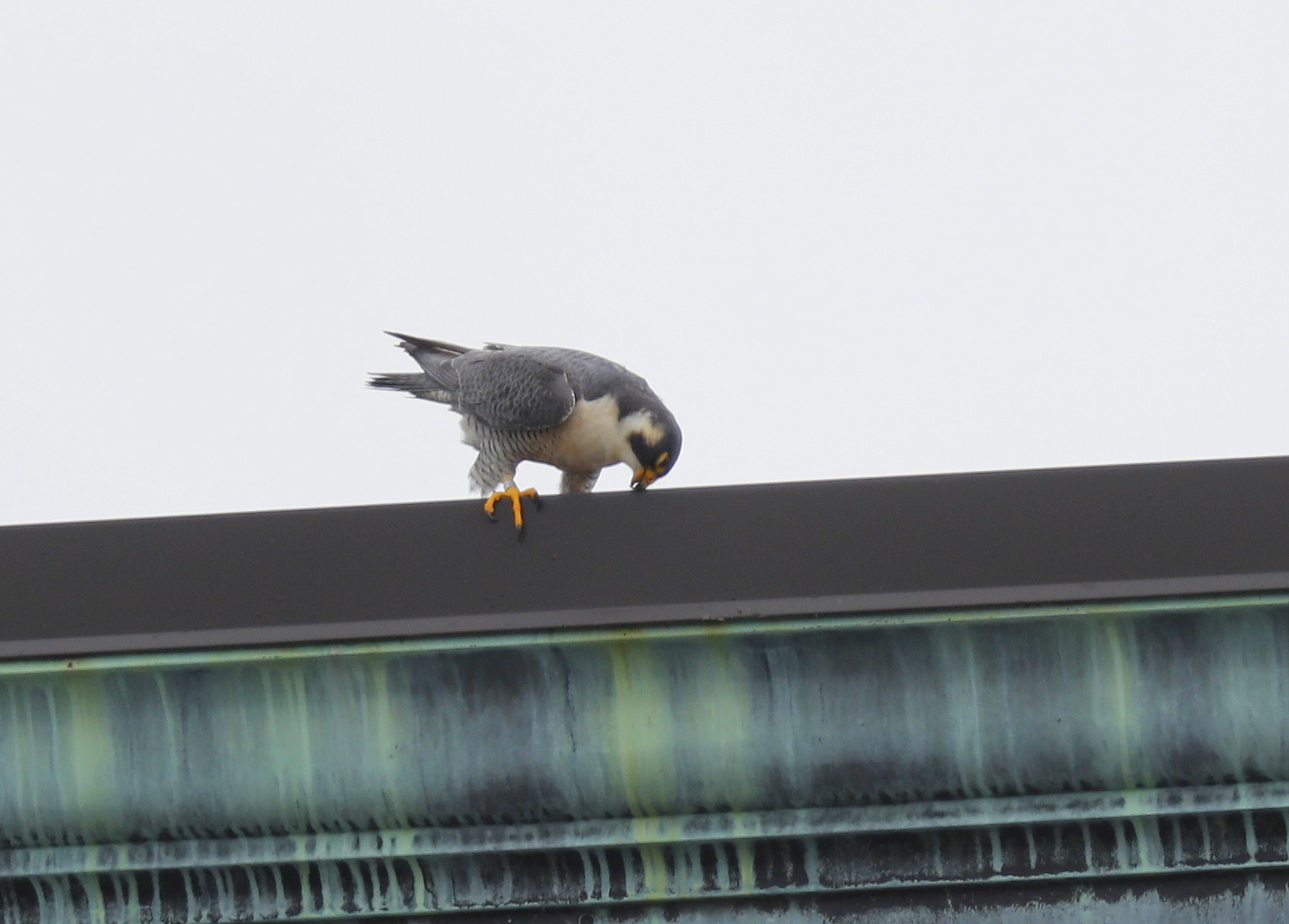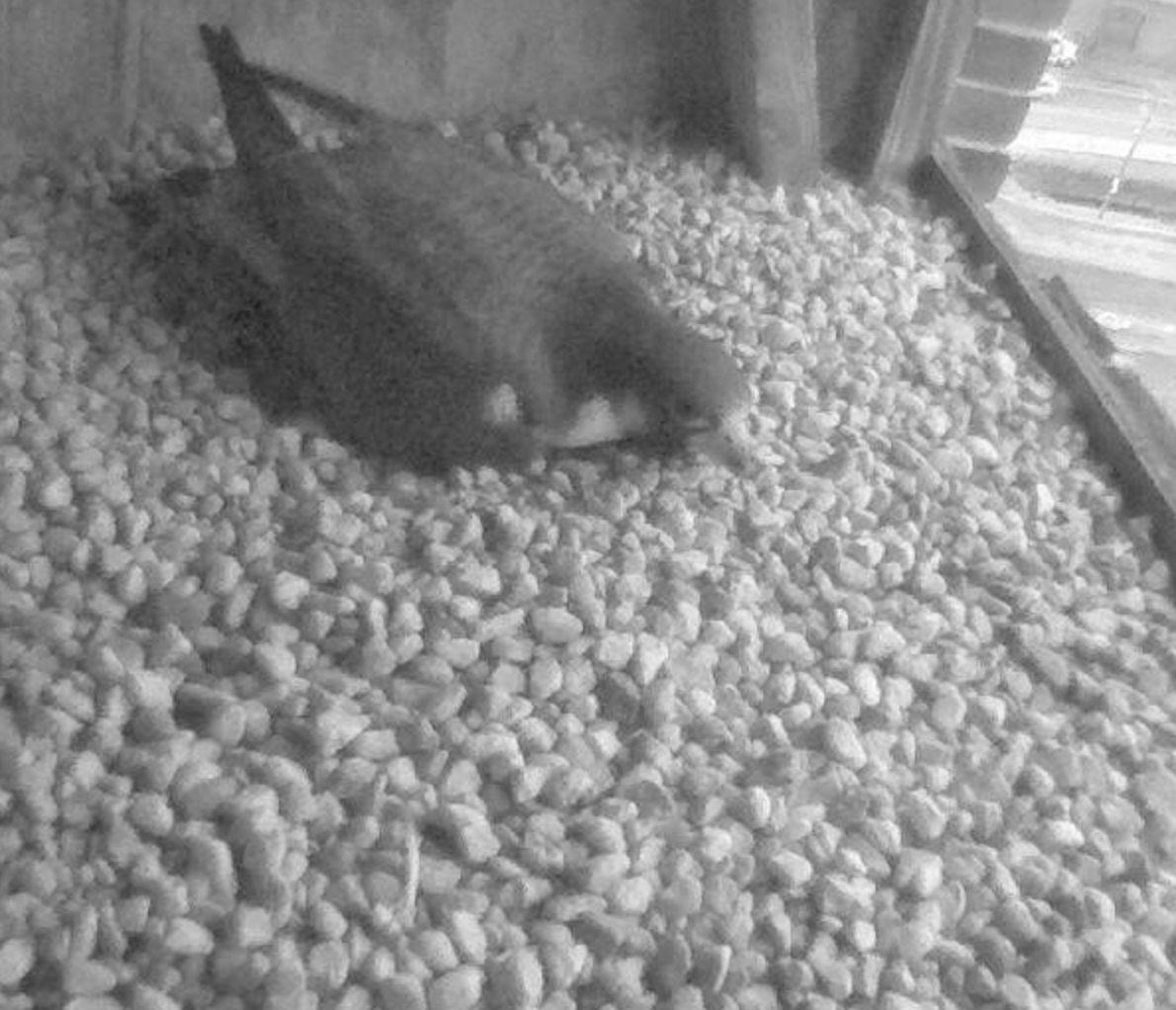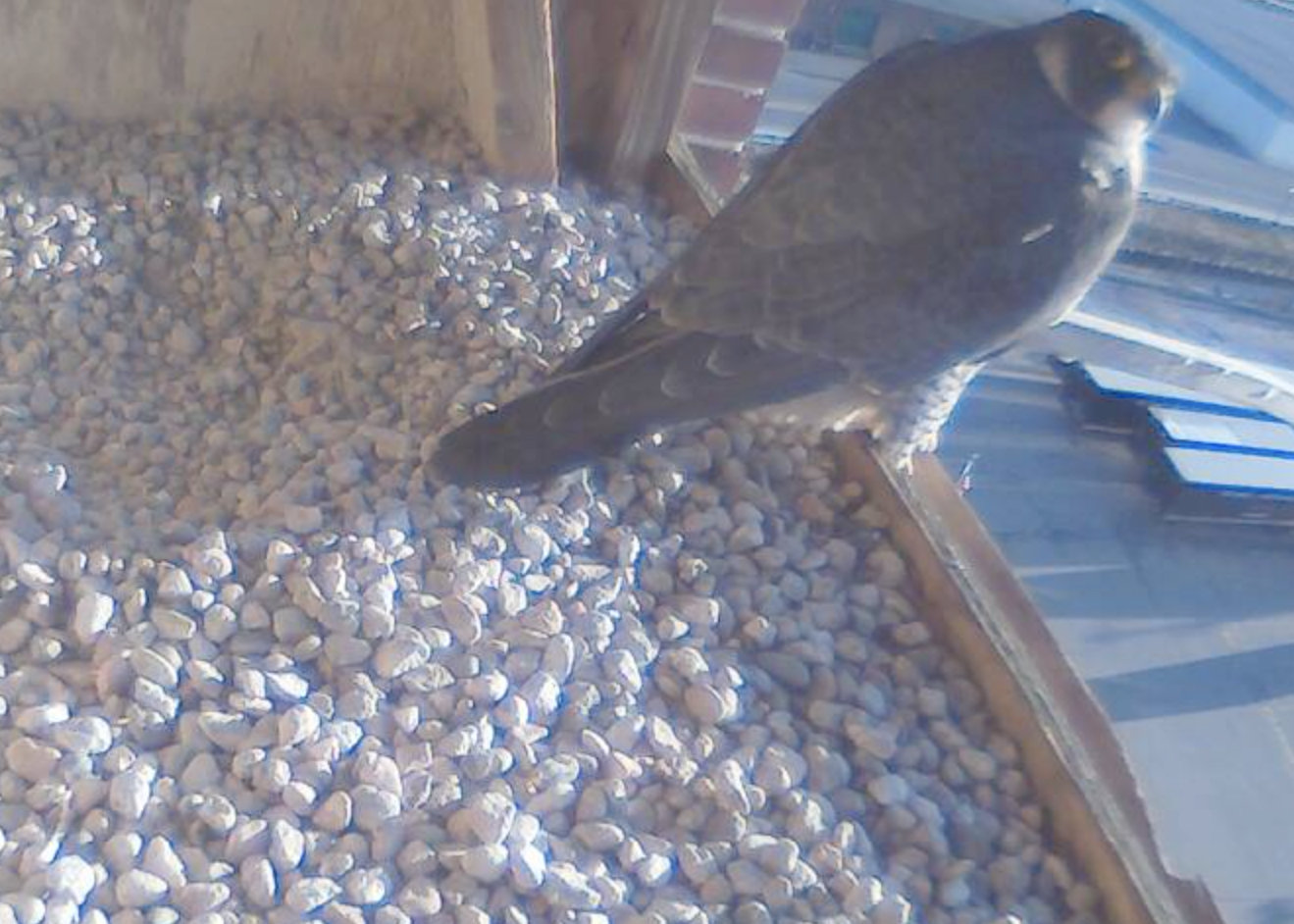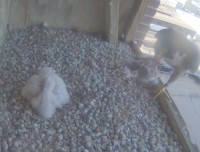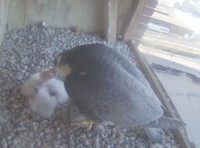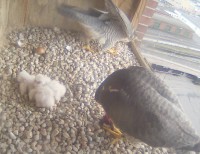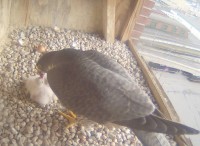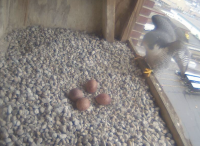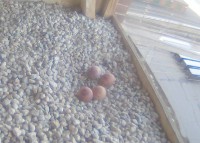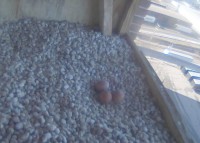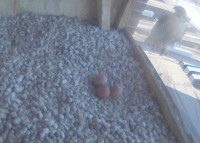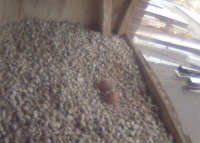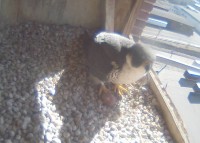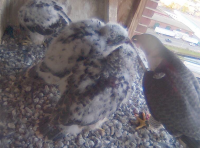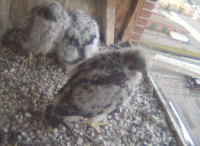Lawrence Peregrines: week of March 20, 2023
March 26, 2023 in In the Nest Box, Near the Clock Tower
March 20, 2023 under clear skies, wind W at 13MPH, temp at 36F. After searching all around the Clock Tower, made way for the red brick Pacific Mills smokestack and located one of the Peregrines sunning and preening on the east side of the stack near the top. This was a common perch location last year when the nest ledge was under the Casey Bridge. Image just before 10AM.
Just a few minutes later while looking for the second falcon, made a possible sighting and then confirmed right away. The other falcon was perched up near the top of the Clock Tower, on the top of a north facing window frame in the shade, and just keeping an open eye. Image at 10:06AM. The falcons have not been in or near the nest box over the past week, so stay tuned!
March 21, 2023 at 10AM under overcast skies, wind SW at 5MPH, temp at 44F. After initial scouting around the Clock Tower, headed west on Merrimack Street and turned north onto the Casey Bridge. About halfway across the bridge, noticed the male Peregrine perched on one of the Pacific Mills rooftop edges facing south with a gaggle of Crows nearby. The male appears to have a full crop. Peregrines like many other birds, come equipped with an anatomical feature known as a “crop.” It is essentially a widened pouch at the bottom of a Peregrine’s esophagus, just above the stomach. Peregrines can store food in their crops and then, slowly transfer it to their stomachs as they digest. They will often display a noticeable swelling in their chests when their crops are full. The male has a very full crop, strong evidence that it had just finished a meal!
Minutes later, discovered the unbanded female lounging on the SW rooftop corner of the Mill240 building. This has been a regular perch location this spring, and provides an excellent vantage point both up and down the Merrimack River. The river is a significant flyway for all kinds of local birds and ducks. She heard the active call from the male and launched into flight and landed on the red brick Pacific Mills smokestack.
March 22, 2023, just after 10AM, under clear skies, wind NE at 6MPH, and temp at 46F. Great news this morning while checking the New Balance web cam! Not one but both male and female Peregrines inside the nest box. The male had been finishing off a meal with the female out on the perch. The female came in and then the male was seen pushing gravel around in the bowl-shaped “scrape” area in the back left corner from the camera view. One or another of the pair can often be seen to lean forward, pushing with its talons, to use its breast to form the substrate into a bowl (scrape) where the eggs will be laid. Scraping is part of courtship. The birds continue to work on the scrape in preparation for egg laying. Eggs should appear sometime toward the end of this month, or first week in April at the latest. Stay tuned!
March 23, 2023 under overcast skies, wind W 12MPH, and temp at 59F. Made a late afternoon visit to the Clock Tower and found both Peregrines on upper ledges.
Female in flight……
Male cleaning his bill on roof edge after food exchange
March 24, 2023 under mostly cloudy skies, wind W 8MPH, and temp at 44F. Webcam in the morning, male working on the scrape by laying his chest down and and using his legs to forward to deepen the scrape bowl.
March 26, 2023 at just after 6PM, under clear skies, strong W winds at 16MPH with gusts to 26MPH, and temp at 54F. The female continues to linger and spend time in the New Balance nest box.
